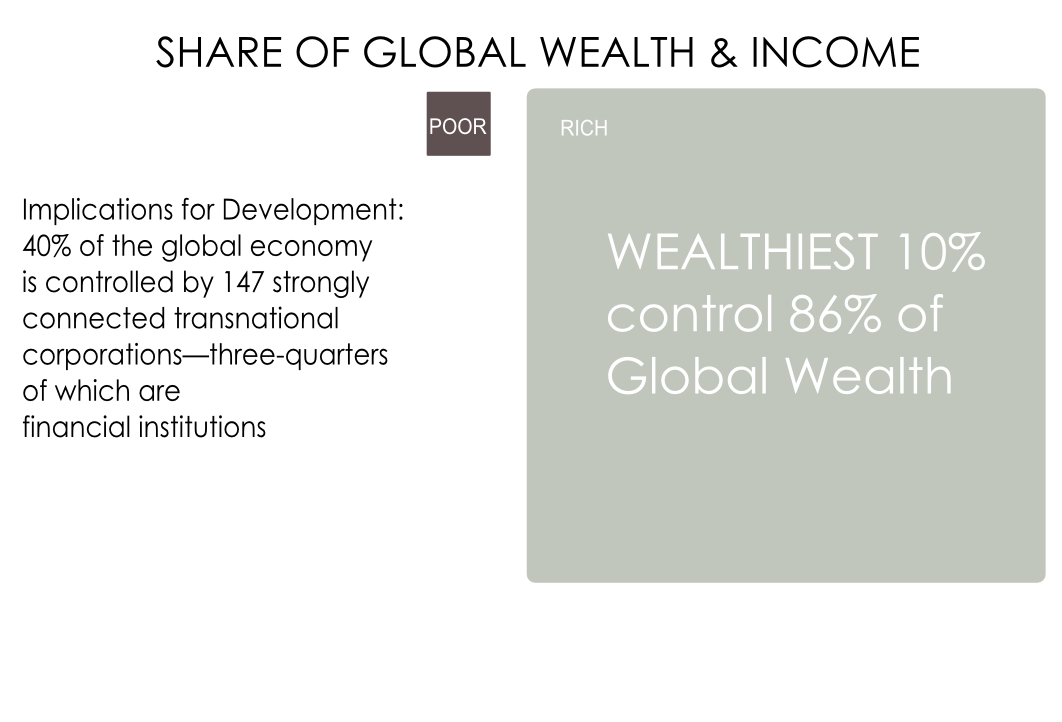
PDF VERSION OF BLOG ENTRY AVAILABLE HERE: GLOBAL INEQUALITY_The Hard_Facts
On a global level, instead of international tax and monetary policies shrinking global inequality, they have helped do the opposite at a great expense to the world’s poorest inhabitants—who lack decent opportunities and access to food, shelter, health, and education. Many live on less than $1 a day. This is their lot in life not because of what they did but because of factors out of their control like what part of the globe they were born in, race, nationality, or sex. While inequality has always been a part of the human experience, it has reached inexcusable levels.
The Extent of Global Inequality
According to a study of 43,060 transnational corporations drawn from a sample of 30 million done by researchers in Zurich, 40 percent of the global economy is controlled by 147 strongly connected transnational corporations—three-quarters of which are financial institutions. Having a disproportionate share of global wealth in the hands of a few has not always been the case and the inequality gap between countries used to be much narrower.
“200 years ago, rich countries were only 3 times richer than poor countries. By the end of colonialism in the 1960s, they were 35 times richer. Today, they’re about 80 times richer” says TheRulesOrg. The 1999 Human Development Report divulged that, the world’s richest 20% had 86% of world GDP and the poorest 20% had 1%. It added that the former had 82% share of global exports of goods and services while the latter only 1%. This trend remained unchanged in the new millennium. A 2011 UNICEF report revealed that, the richest 20% still enjoyed almost 83% of total global income whereas the poorest 20% continued to enjoy 1%.
How about wealth disparity? Wealth inequality where wealth is defined as “the value of financial assets plus real assets …owned by households, less their debts” is also widening. The 2013 Credit Suisse Global Wealth Report reported that global wealth had reached $241 trillion—a 68% increase since 2003. The richest 10% of the world’s population currently own 86% of global wealth while the bottom half of all adults own less than 1%. Additionally, the average global wealth per person is $51,600 but in rich nations, the average wealth is $100,000 per adult added the report. Outliers include Luxembourg, Norway, Australia and Switzerland where average wealth per adult in 2013 were $315,000, $380,000, $403,000 and $513,000 respectively. In contrast to rich nations, the average wealth per adult in nations in central Africa and South Asia was …
To read the full article, click THIS LINK






